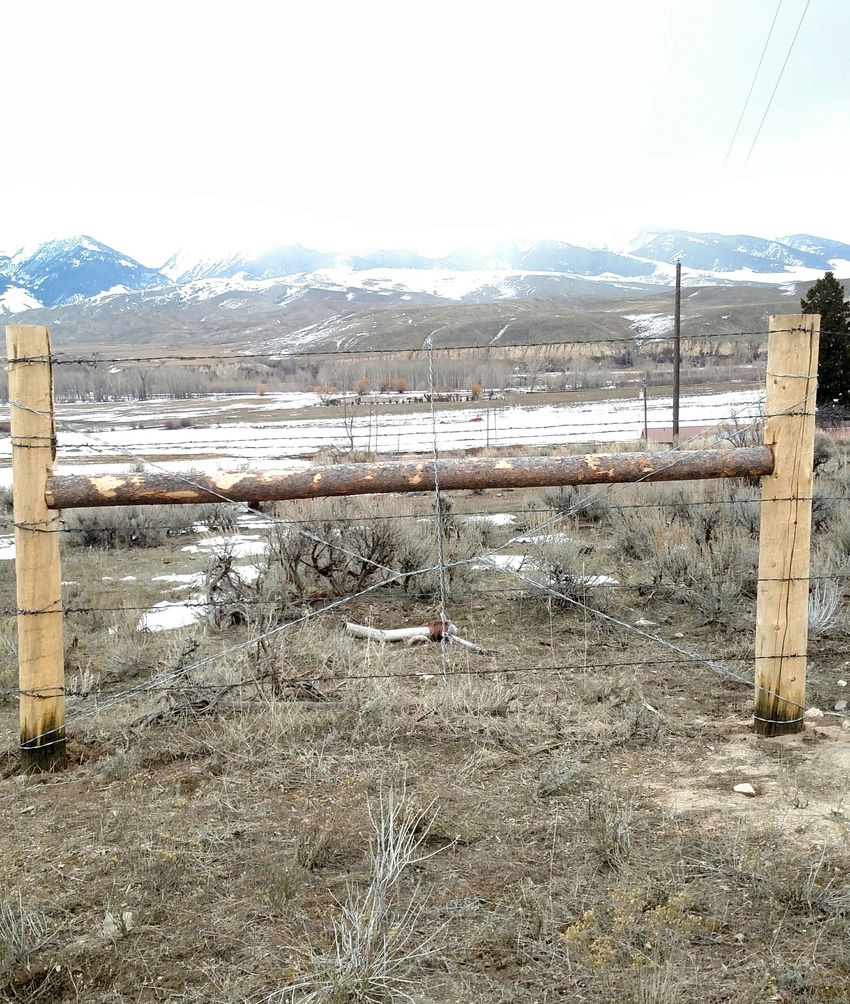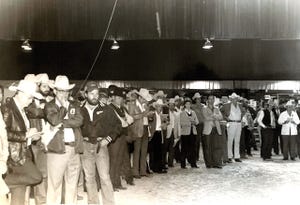To X or not to X your fence braces: That is the question
Everyone has an idea on how to build the best barbed-wire fence. What’s yours?

Usually, I reserve this blog for industry issues of wide concern—policies, politics, industry arguments and the like. This week, however, let’s address an issue of far greater importance.
Like whether it’s best to use an X of crossed wires on your H braces or just one wire.
A reader called the other day and left a message with his thoughts on the subject. With May being the beginning of spring turn-out in many parts of cattle country, this is a question of immediate importance as you prep your fences.
I presume the reader was referring to the Fencing Guide in our April magazine. His thought is that one of the wires in the X is pulling the wrong direction. Instead, one wire pulling in the same direction as the fence pull is what is needed.
Related: 15 photos of fencing from start to finish
Veteran BEEF writer Heather Smith Thomas authored the articles in the Fencing Guide, using her son, Michael, as the source. Michael is a full-time custom fence builder.
Michael was, oddly enough, out building a fence when I contacted Heather. But she and her husband, Lynn, have been ranching their entire lives and have quite a bit of experience building, fixing and maintaining fences. Here’s her response:
“There are a number of ways to build braces. The reason we use the wire this way in an H brace is that the wires are twisted together and pull the posts toward each other—to stabilize the brace itself.
“We’ve built and been around barbed-wire fences all our lives and have seen what works and what doesn’t. We’ve seen some braces built the way your reader suggests and they don’t seem to last as long.
“As my husband Lynn points out (he’s built many miles of fences on our place—and on leased places and on our BLM range allotment over the past 52 years) the main thing is to have enough braces—enough frequency and in the appropriate places in terms of the terrain—to keep the fence secure.
“If you look closely at the braces Michael made, the pin is in the center of the twists, and the forces are all equal. The rebar pin is lodged against the brace pole so it can’t unwind, and it is stapled to the brace pole. The twist is pulling against the brace pole. This method has worked very well for us for a long time.”
READ: What's the cost of fixing vs. building a new fence?
Michael put down his hammer long enough to add his thoughts: “The one diagonal wire is physically functional, and mathematically sound, but the X-wire makes the brace itself a more solid stand-alone structure that can withstand pressure from either direction. The one diagonal wire brace is only designed to withstand load from one direction. To me, the one diagonal wire is a lazy man’s answer to a brace. Ironically, braces must be a real issue for folks. I have two urgent jobs this spring that involve building braces for people.”
My dad used the X-wire inside the brace as well as a brace pole on the outside of the H brace running at an angle to the ground and nailed to a ground-level post. This angled brace pole ran in the direction of the fence pull.
Maybe that was overkill, but his philosophy was that more is a lot better than less. This was abundantly clear when anyone besides him tried to change a tire after he tightened the lugs.
What’s your opinion? How do you build and brace a barbed-wire fence? What’s the best way to set posts in sandy soil? Rocky soil?
Electric fences are also widely used, so feel free to weigh in with your thoughts on those as well.
Here are some of the comments from our Facebook post on this article:
Keri Richards | Always used an X in my braces to keep the cross brace tight in the uprights. Twisted with a stake and braced the stake against the horizontal part of the H which allowed for future tightening as the wood dried out and things shrunk. Tightened many fences built by other this way over the years over time and they seemed to work for many years.
R Ellis Smith | Look at old fences with ‘X’ and one of them will be sagging. The sagging one was not needed. Brace wire is no good if in compression.
Steve Bassett | Only need a wire in the direction of pull. A second wire without any strain doesn't do anything. Twisting both together like in the picture is absolutely wrong because when you pull tension it will cant in the direction of pull resulting in the brace giving and pulling out of level.
Paul Shuey | For me it depends where the H brace is located. An end H brace I use one diagonal wire brace. For a center H brace I go with the X wire brace. All depends on the direction of force I'm trying to resist. The key is compression in the horizontal beam and tension in the brace wires. Always want to make that structurally sound triangle.
Shawn Baugh | There is no right or wrong as long as the fence holds in the animals that you want to keep in. I have seen a lot of junk fences holding in animals that were not built nothing as good as this brace.
Jeffrey M Hough | X is the only way to go.
Gary Gardner | X brace it all take little time and looks symmetrical.
Tom Joad | I have built them both ways. The x isn't always needed . But it pulls everything to the center of the brace.
Jimmy Kirby | Built 1,000 of miles of fence, alway X.
About the Author(s)
You May Also Like
.png?width=300&auto=webp&quality=80&disable=upscale)


